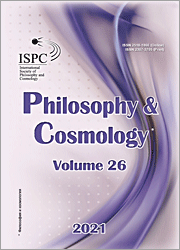The Moon: New Data and Hypotheses of Origin
The Moon: New Data and Hypotheses of Origin
Author(s): Oleg Avchenko, Anna V. AseevaSubject(s): Physical Geopgraphy, Geomatics
Published by: Международное философско-космологическое общество
Keywords: lunar rocks; isotope geochemistry; Moon formation; proto-Earth;
Summary/Abstract: A summary of the latest data on isotope geochemistry of the lunar rocks shows that their silicon, oxygen and refractory metals isotopic composition are no different from terrestrial one, indicating a single source of origin of both Earth’s and Moon’s substances. At the same time, the isotopic signature of the volatiles along with rubidium, zinc, gallium, potassium, iron in lunar rocks is fractionated considerably, showing heavy isotope enrichment compared to Earth’s ones. Kinetic isotope effect, underlying this phenomenon, occurs during the process of lava degassing when volatiles emits from the magma surface to the vacuum of space. Thus, conditions of the crystallization of lunar rocks deviate significantly from those of Earth. We consider the formation of the Moon following Marakushev’s fission theory. In the view of the theory, the Moon has been spun from proto-Earth, while a necessary impulse moment reached due to a proto-Earth’s initial fluid veneer. This event dates to approximately 50 Ma from the moment of the Solar system formation and coincides with the beginning of the proto-Earth’s core impulse segregation. The future Moon consisted of the relatively light silicate material, but also included a portion of the proto-Earth mantle. Meanwhile, other reasonable hypotheses of the Moon formation, such as impact and evaporation theories, are powerless to explain all the peculiarities of the isotopic signatures of the lunar rocks as well as the genesis of the Galilean moons.
Journal: Philosophy and Cosmology
- Issue Year: 26/2021
- Issue No: 26
- Page Range: 5-24
- Page Count: 20
- Language: English

